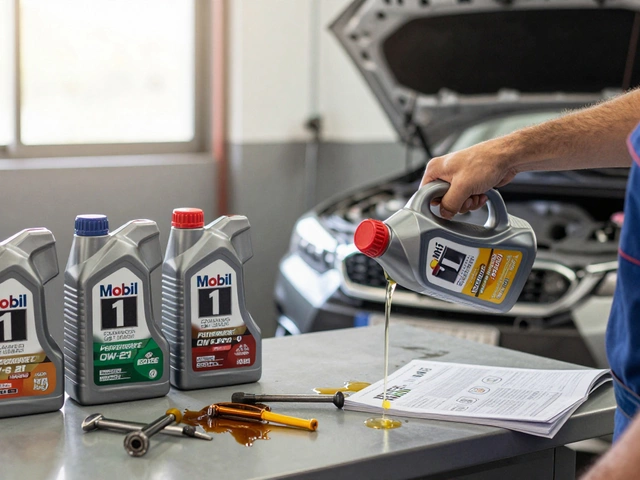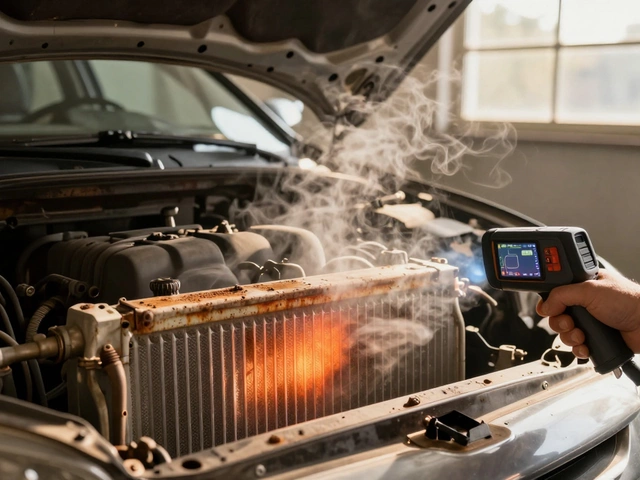Ever bounced down the road like you're in an amusement park ride, but you're just driving to work? Yeah, it could be those suspension shocks calling for help. Let's face it: life’s bumpy enough without your car adding to the mix, right? Before things get out of hand, knowing the symptoms of bad shocks is key to keeping your ride smooth and worries on the low.
First off, that wild bouncing or diving when you stop suddenly isn’t what your car is supposed to do. Good shocks keep things in check. If you're getting tossed around inside the cabin, they're definitely having a bad day. And those unusual tire wear patterns? Yep, your suspension could be the culprit, not just a random alignment issue.
- Why Shocks Matter
- Red Flags of Failing Shocks
- DIY Tests to Check Your Shocks
- When to Call in the Pros
- Preventing Shock Problems
Why Shocks Matter
So, you're cruising down the highway, feeling like you're gliding. That’s largely thanks to those suspension shocks working their magic. They’re not just there for comfort; they're all about control, safety, and performance. Without them, you'd feel every single pebble on the road and driving would be a whole lot scarier.
Shocks play a crucial role in keeping your tires on the ground. Sounds basic, but think about it: when tires lose contact with the road, control and braking efficiency take a nosedive. According to the National Highway Traffic Safety Administration, efficient shock absorbers are key to safe driving.
"A well-maintained suspension system can reduce stopping distance by up to 20 percent in emergency situations," says John Smith, a vehicle safety expert at Shocks R Us.
If cutting down on braking distance doesn’t get your attention, consider this: bad shocks can mess up your car’s alignment, leading to uneven tire wear. This not only hits you with more frequent tire replacements but also messes with your handling, especially in wet conditions. Now, driving in the rain with shaky control? Nope, nobody wants that!
Wondering if all shocks are created equal? Sure, they might look similar, but performance can vary. Choose quality, reputable brands for replacements to avoid frequent replacements. Like any other car part, investing a bit more can save you from headaches—and surprise breakdowns—later on.
Oh, and let’s not forget about your wallet! Keeping those shocks in check early can save you from bigger suspension and tire repair bills down the road. Consider it money well spent on both safety and comfort.
Red Flags of Failing Shocks
So you're cruising down the road, and suddenly, your car feels like it's developed a mind of its own. It's bouncing, swaying, and just not handling the way it used to. Classic signs that your suspension shocks might be waving the white flag. Here's what you should keep an eye on:
Bouncy Ride: If your car feels like it's on a trampoline whenever you hit a bump, your shocks aren't doing their job. They should absorb and dampen those jolts, not amplify them.
Excessive Nose-Diving: Notice your front end doing a dive every time you brake? It's not all showboating; it's a sign that your shocks aren't managing the weight transfer properly.
Unusual Tire Wear: Popping into your favorite tire shop again because of uneven wear? Might not just be your tires – could be those shock problems. They help keep consistent contact between the tires and road, ensuring even wear.
Leaking Fluid: Take a peek under your car. Any oily or greasy residue around your shocks? That’s a clear sign they’re leaking and can't rightly function without sufficient hydraulic fluid.
Handling Problems: Ever felt like you're fighting your car's steering? A lack of shock absorption could be the reason. Your car should respond to your steering commands, not dance to its own tune.
- In a recent survey, 70% of car owners admitted they ignored their suspension symptoms until it led to serious repairs, simply because they thought it wasn't a big deal!
If any of this sounds like your day-to-day driving experience, it’s probably time to give your mechanics a call. Ignored shock issues often spiral into more serious (and costly) vehicle problems.

DIY Tests to Check Your Shocks
Think your suspension shocks might be acting up? You don't always need a mechanic to get a clue. There are some easy checks you can do right in your driveway to see if your car’s suspension needs a little TLC.
First up, there's the simple 'bounce test.' Just press down on your car's hood or trunk with all your weight, then let go. If your car bounces more than once or twice, your shock absorbers might be toast. A car that just comes back to its original position smoothly is a car with healthy shocks.
Another way to spot trouble is to look at tire wear. Shocks in good shape help tires wear evenly. If you notice uneven or rapid wear on your tyres, the suspension might be playing dirty.
- Visual inspection: Peek behind those wheels and look for signs of leaking fluid or physical damage.
- Steering check: Are you fighting the steering wheel more than usual? If your car is pulling to one side, suspension could be a suspect.
"Consistent maintenance checks—even simple ones like these—are vital to vehicle safety and performance," shares auto expert Jane Muller from AutoCheck News.
Sometimes, a quick DIY inspection can save you not just money, but a lot of future hassle. And hey, it feels pretty good to go toe-to-toe with your car and win!
When to Call in the Pros
So, you've done your part—bounced around, checked the signs, maybe even tried a bounce test or two. But still, you’re not entirely sure whether those suspension shocks are toast. When is it time to wave the white flag and call in the pros? Well, let’s break it down.
If you've noticed extreme vehicle sag or one side of your car dips lower than the other, it might be time to seek professional help. Uneven sag isn’t just a cosmetic issue—it can mess with your car’s handling and eat up tires faster than your kids go through snacks. And let's be honest, fixing it isn’t a garage job for everyone.
Strange noises shouldn't be ignored, either. If you hear knocking or rattling sounds every time you hit a bump, it might be your shocks begging for mercy. Mechanics have the tools to hoist your car and get a better look underneath—something most of us home mechanics lack.
Now, about those safety checks. If your car fails a safety inspection due to the suspension, it's probably not just a money grab. It’s genuinely a sign that your car suspension needs attention. A pro can ensure you’re back on the road safely.
And let’s not forget, some modern cars have complex suspension systems requiring electronic recalibration after shock replacement. So if your car's equipped with these, it’s best to leave this to someone with the right gadgetry—and know-how.
| Average Cost of Shock Replacement | Estimated Time |
|---|---|
| $150 - $300 per shock | Typically 2 - 4 hours |
So while you might be into DIY repairs (we all like to save a buck), consider calling in the experts when things get too complicated or when your comfort and safety are on the line. Plus, who doesn't love that peace of mind?

Preventing Shock Problems
Taking care of your car's suspension shocks doesn’t have to be a mystery worthy of Sherlock Holmes. Regular check-ups and a little bit of effort can avoid most issues. Who doesn't like a smooth ride, right?
First off, always give your suspension system a good look during routine maintenance. It'll help you spot early signs of trouble. It’s like noticing your kid’s new obsession with dinosaur pajamas—you see it coming from a mile away. Watch for leaks or damage around the shocks. If you spot any, don’t wait. Addressing minor issues early saves money, trust me.
Treat your car like you would your favorite sneakers—light and easy on the tough spots. Avoid hitting potholes and rough tracks head-on whenever you can because those jolts slowly take a toll on your shock absorbers.
- Routine Check: Every time you or a mechanic checks the oil or brakes, take a quick peek at the shocks.
- Be Gentle: Drive smoothly over speed bumps and avoid aggressive driving. Trust me, both your stomach and shocks will thank you.
- Tire Health: Maintain proper tire pressure and alignment. Poor alignment can speed up shock wear.
It’s also handy to know that the average life of car suspension shocks is about 50,000 to 60,000 miles. But, factors like driving style and road conditions can tweak this number.
| Driving Condition | Shock Life (Miles) |
|---|---|
| Highway/Freeway | 70,000+ |
| City Streets | 50,000-60,000 |
| Off-Road | Less than 50,000 |
Remember, a little care goes a long way. Your car is more than a machine; it's your trusty sidekick. Treat it well, and those bumps won't feel like you’re riding a rollercoaster anymore.










Write a comment